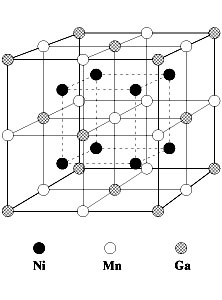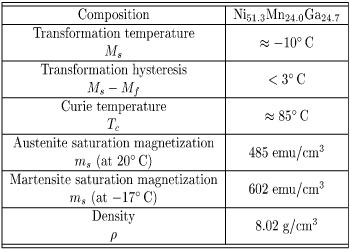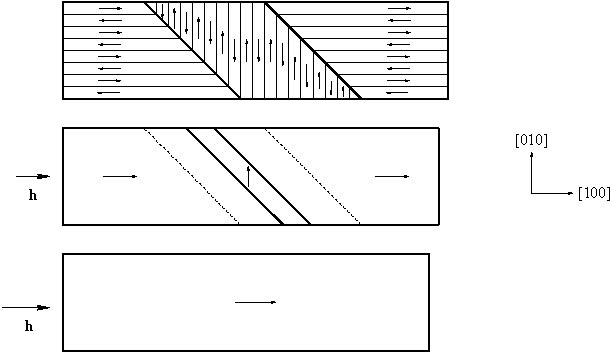In Ni2MnGa a cubic to tetragonal transformation occurs when the material is cooled below
a characteristic martensite start temperature Ms. In this transformation the cubic unit
cell is contracted along one <100> axis and extended along the other two, as shown in the figure on the right. Cubic symmetry
permits three possible tetragonal structures called variants to form, depending on which
axis contracts. A typical martensitic microstructure consists of mixtures of the three
variants in which two adjacent variants meet at one of two possible well-defined interfaces
called twin planes. While each of these variants has a unique orientation defined by its
c-axis, the martensitic phase is essentially a polycrystalline state composed of variable
volume fractions of the three variants.
The ferromagnetic shape memory (FSM) effect refers to either the reversible field-induced austenite
to martensite transformation, or the rearrangement of martensitic variants by
an applied field leading to an overall change of shape. Our research has concentrated on
the large magnetostrictive strains due to the latter effect.
Our experiments have demonstrated the ferromagnetic shape memory effect using procedures
based on the assumption that each variant has a strong uniaxial magnetic anisotropy in which the easy axis is aligned with the c-axis (as shown in figure on right). From the twinning orientation relationship in Ni2MnGa it can be seen that easy axes of neighboring twin bands are nearly perpendicular to each other, so that a suitable pair of fields or a suitable arrangement of field and stress can be used to bias the material toward one variant of martensite or another, leading to a large change of shape.
|

Tetragonal variant structure
and associated magnetizations |
|




